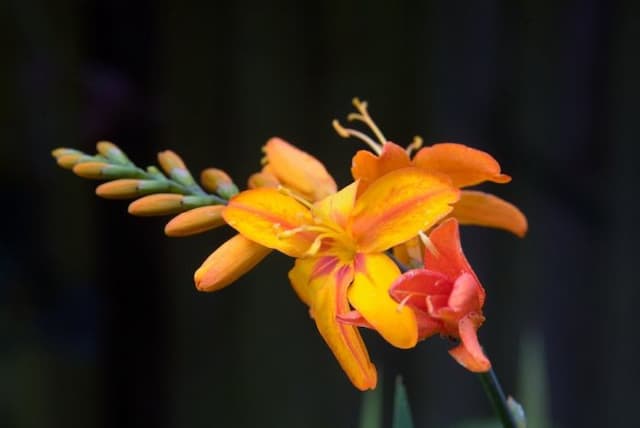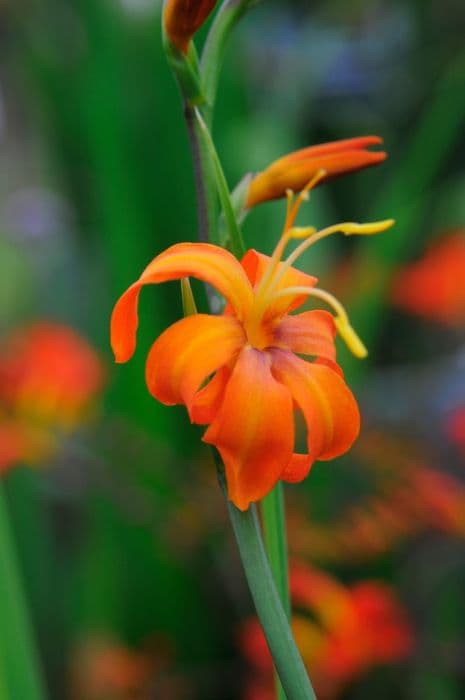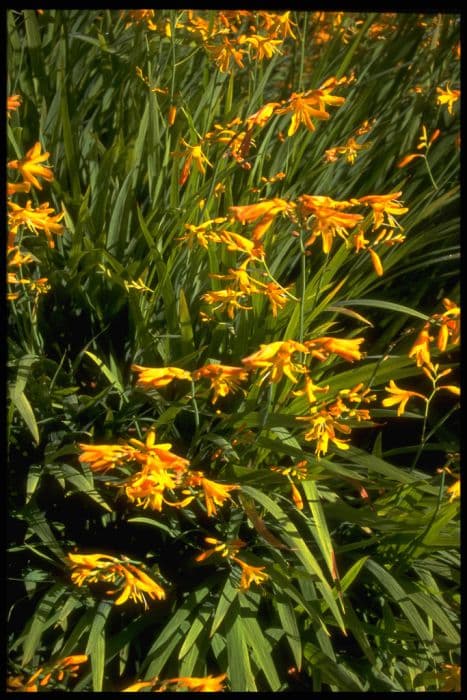Dwarf Bearded Iris Iris 'Sarah Taylor' (SDB)

ABOUT
Iris 'Sarah Taylor' is a striking and elegant plant, featuring blossoms that have a unique color combination and patterning. The flowers of this variety have beautifully ruffled petals that are typically a mix of subdued tones. The standards, or the upper petals, have a pale hue that can range from cream to soft yellow, creating a gentle contrast. Blending harmoniously, the falls, which are the lower petals, often display a more saturated color, perhaps in shades of lavender, violet or a deep purple, which adds a striking appeal to the overall look of the blossom. The falls may also exhibit intricate veining or dotting, adding texture and visual interest. The heart of the flower bears a distinctive beard, which is a fuzzy line that offers yet another layer of color contrast. It can appear in a shade that complements or contrasts with the petals, such as white, yellow, or orange. This part of the flower is not only attractive but also serves to guide pollinators to the plant's reproductive organs. The flowers bloom graciously atop sturdy stalks, which are often surrounded at their base by sword-like foliage. The leaves are typically a rich green color, providing a lush background for the spectacular blooms. The foliage's upright and slender form adds an architectural element to the plant's overall shape and texture. Overall, Iris 'Sarah Taylor' presents a harmonious blend of floral hues and an appealing structure that makes it an attractive addition to any garden or landscape setting, where its blossoming can signal the arrival of the warmer seasons.
About this plant
 Names
NamesFamily
Iridaceae
Synonyms
Standard Dwarf Bearded Iris, Sarah Taylor Iris
Common names
Iris 'Sarah Taylor' (SDB).
 Toxicity
ToxicityTo humans
The Standard Dwarf Bearded Iris, commonly known as Sarah Taylor, is not typically dangerous to humans, and there isn't much information available on severe poisoning from this plant. However, Irises contain compounds that can be toxic if ingested in large quantities. The most common issue comes from handling the rhizomes, which can cause skin irritation due to the presence of irritating compounds. If ingested, parts of the plant may cause mild stomach upset.
To pets
The Standard Dwarf Bearded Iris, known as Sarah Taylor, can be toxic to pets if ingested. The rhizomes (rootstock) contain irisin, iridin, or irisine which can cause gastrointestinal distress, including vomiting and diarrhea, if your pet consumes them. In some cases, there may also be excessive drooling or lethargy. If you suspect your pet has ingested part of an iris, it is best to consult your veterinarian promptly.
 Characteristics
CharacteristicsLife cycle
Perennials
Foliage type
Deciduous
Color of leaves
Green
Flower color
Varies
Height
1 feet 10-12 inches (25-30 cm)
Spread
1 feet 10-12 inches (25-30 cm)
Plant type
Bulb
Hardiness zones
Varies
Native area
Varies
Benefits
 General Benefits
General Benefits- Decorative Appeal: The Iris 'Sarah Taylor' adds striking aesthetics to gardens with its beautiful blooms and attractive foliage.
- Drought Tolerance: Once established, it is fairly drought-tolerant, making it suitable for water-efficient landscaping.
- Easy Maintenance: This plant is low-maintenance, requiring minimal care once it is well-situated in the right environment.
- Pest Resistance: Irises are generally resistant to deer and many other pests, reducing the need for chemical treatments.
- Soil Versatility: It can thrive in a variety of soil types, though it prefers well-drained conditions.
- Seasonal Interest: The plant has a specific bloom time that adds seasonal interest and color to the garden landscape.
- Attracts Pollinators: The flowers can attract beneficial insects, such as bees and butterflies, playing a role in pollination.
- Division Growth: It can be propagated through division, making it easy to create more plants and share with other gardeners.
- Color Variety: Provides a burst of color that can complement other plants in a mixed border or flower bed.
 Medical Properties
Medical PropertiesThis plant is not used for medical purposes.
 Air-purifying Qualities
Air-purifying QualitiesThis plant is not specifically known for air purifying qualities.
 Other Uses
Other Uses- Artistic Inspiration: The Iris 'Sarah Taylor' can inspire artists and be used as a subject for paintings, drawings, and photography due to its striking colors and unique form.
- Edible Flowers: Although not commonly used for culinary purposes, some iris flowers can be crystallized or used as garnishes in salads, but caution is advised as some irises can be toxic.
- Eco-Friendly Dye: The petals of the Iris 'Sarah Taylor' could be used to create natural dyes for fabrics, offering an alternative to synthetic dyes.
- Floral Arrangement Demonstrations: This variety of iris can be used in floral design classes to teach students about aesthetics and arrangement techniques.
- Water Garden Accent: While not a typical water plant, this iris could add seasonal interest to water gardens when planted in moist, yet well-drained areas near the water's edge.
- Theme Gardens: Irises like Iris 'Sarah Taylor' can be showcased in monochromatic gardens focusing on a specific color palette, like pastels or cool colors.
- Perfumery: Some irises are used in perfumery for their aromatic rhizomes; though 'Sarah Taylor' specifically may not be used for this purpose, it could potentially contribute if it has a notable fragrance.
- Education: Irises can be used in horticultural therapy programs, providing an opportunity for participants to engage in plant care and gardening as a form of therapy.
- Companion Planting: Irises like 'Sarah Taylor' can be used as companion plants for roses or other perennials, to attract pollinators or to add height and texture contrast.
- Symbolism: Irises symbolize wisdom and hope in some cultures and can be used in various events and ceremonies to convey these messages.
Interesting Facts
 Feng Shui
Feng ShuiThe Iris is not used in Feng Shui practice.
 Zodiac Sign Compitability
Zodiac Sign CompitabilityThe Iris is not used in astrology practice.
 Plant Symbolism
Plant Symbolism- Faith: The iris is often associated with faith and has been a symbol of this virtue in various cultures and religious contexts.
- Wisdom: In some traditions, the iris represents wisdom. It is believed to symbolize valued knowledge and intelligence.
- Hope: The iris can be a symbol of hope, offering a sign of optimism and expectation for the future.
- Courage: The bold appearance of the iris can embody courage, inspiring boldness and bravery in challenging situations.
- Royalty: With its regal petal structure and vibrant colors, the iris is sometimes linked to royalty and regal bearing.
 Water
WaterThe Dwarf Bearded Iris, including 'Sarah Taylor', should be watered deeply once a week, providing about one inch of water each time to encourage deep root growth. During the active growth period in spring, maintain even soil moisture until the bloom period is completed. After flowering, reduce the frequency of watering as too much moisture can lead to root rot. During summer, water them every two to three weeks, especially in hot, dry climates. Ensure not to overwater; the soil should be allowed to dry out slightly between waterings. Gauge the amount of water depending on rainfall, and adjust accordingly to avoid soggy conditions.
 Light
LightDwarf Bearded Iris, like 'Sarah Taylor', thrives best in full sunlight. They should receive at least six hours of direct sunlight daily to bloom optimally. Planting them in a spot that ensures morning sunlight but provides some protection from the intense afternoon sun can help prevent the flowers from fading quickly. However, too little light may result in poor or no blooming.
 Temperature
TemperatureDwarf Bearded Iris 'Sarah Taylor' is hardy and can tolerate a wide range of temperatures but thrives in conditions between 35°F and 75°F. They can survive winter temperatures as low as -30°F and summer temperatures as high as 90°F. However, providing mulch during extreme cold or heat can help maintain optimal conditions for the health of the plant.
 Pruning
PruningPruning Dwarf Bearded Iris, like 'Sarah Taylor', involves removing spent flower stalks after blooming to maintain a tidy appearance and direct energy back into rhizome growth. Cutting back the foliage is unnecessary until the end of the growing season. In late fall, trim the leaves to a few inches above the ground to minimize overwintering places for pests and disease. Pruning once a year after bloom and then preparing the plant for winter should suffice.
 Cleaning
CleaningAs needed
 Soil
SoilDwarf bearded iris 'Sarah Taylor' thrives in well-drained, moderately fertile soil with a pH of 6.8 to 7.0. The best soil mix includes loamy garden soil, compost, and sharp sand to improve drainage. Fertilize lightly in early spring and after blooming.
 Repotting
RepottingDwarf bearded irises like 'Sarah Taylor' typically do not need frequent repotting and are usually divided every 3 to 5 years to maintain vigor and increase blooming.
 Humidity & Misting
Humidity & MistingDwarf bearded iris 'Sarah Taylor' prefers a dry climate with low humidity, mirroring its natural habitat. It tolerates standard outdoor humidity levels but does not require high humidity to thrive.
 Suitable locations
Suitable locationsIndoor
Ensure full sun, well-drained soil, and divide every 3-5 years.
Outdoor
Plant in sunny spot with well-drained soil; divide every 3-5 years.
Hardiness zone
3-9 USDA
 Life cycle
Life cycleIris 'Sarah Taylor', a type of Standard Dwarf Bearded Iris, begins its life cycle when its seeds are sown in soil and undergo germination, typically in the spring or fall. The seeds develop into small seedlings which slowly mature into larger plants with characteristic sword-like leaves. As the plant grows, it forms underground storage structures called rhizomes, which help it survive adverse conditions and store nutrients. It reaches maturity usually within two to three years, at which point it begins its flowering phase during late spring, showing off its distinctive and colorful blooms. After the flowering period, the plant enters a period of dormancy, especially in cooler climates, to conserve energy for the next growing season. The life cycle can repeat annually, with the rhizomes capable of producing new shoots and divisions that can be separated to propagate new plants.
 Propogation
PropogationPropogation time
Spring to Early Summer
Propogation: The Iris 'Sarah Taylor', a cultivar of Standard Dwarf Bearded Iris, is typically propagated through division. The best time for this is late summer to early fall, after the blooming period has ended and the plants have gone dormant. To propagate through division, you carefully dig up the iris clumps and use a sharp knife to cut apart the rhizomes, ensuring each division possesses at least one fan of leaves and a portion of the roots. Trim the leaves to a third of their length (about 4 to 6 inches, or 10 to 15 centimeters) to reduce water loss and replant the divisions at least 12 to 24 inches apart, setting the rhizome just below the soil surface. Water the new plantings well to help them establish. This method stimulates rejuvenation, improves blooming, and helps manage the size and shape of your iris clumps.
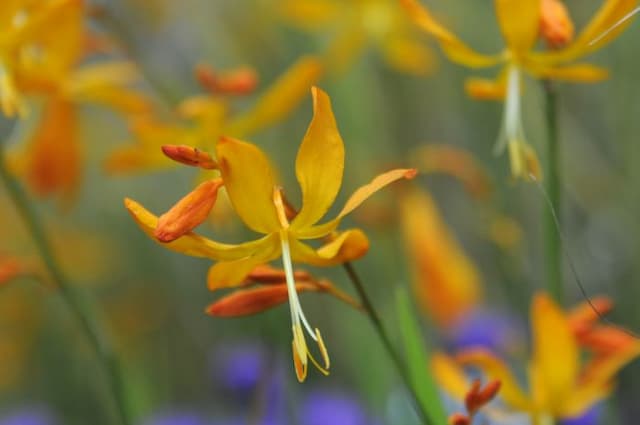
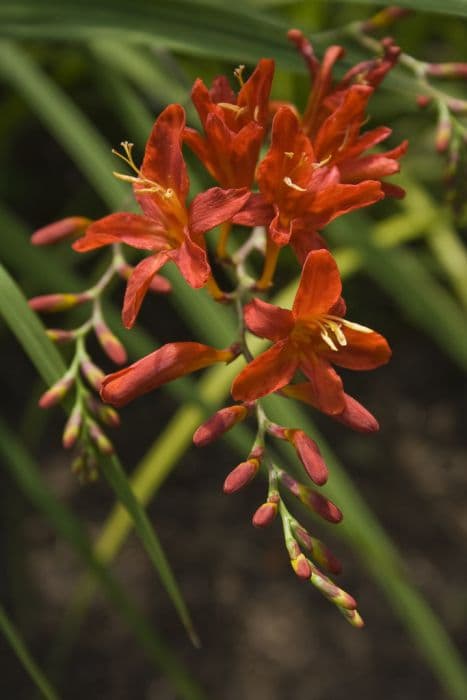
![Montbretia [Bright Eyes]](/_next/image?url=https%3A%2F%2Fplants-admin.emdemapps.com%2Fimages%2Fplants%2F%2Fimages%2F604b5f4a483b6.png&w=640&q=75)
